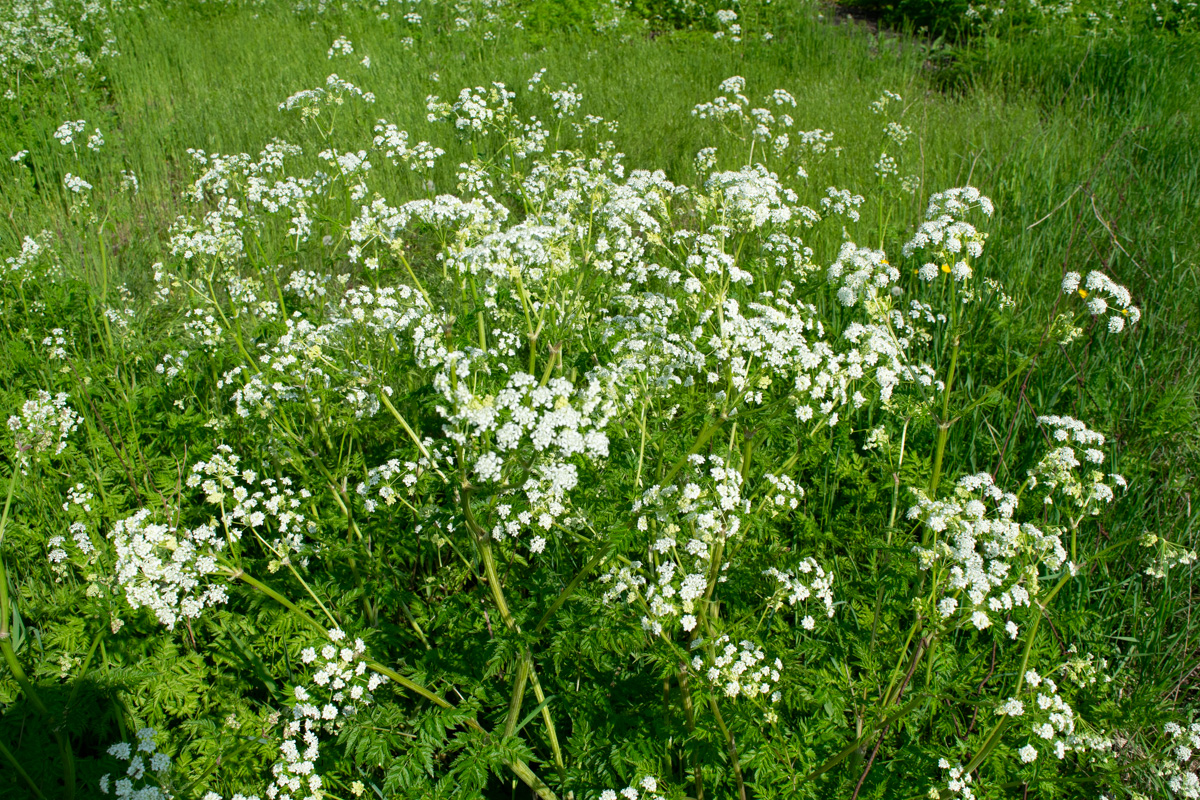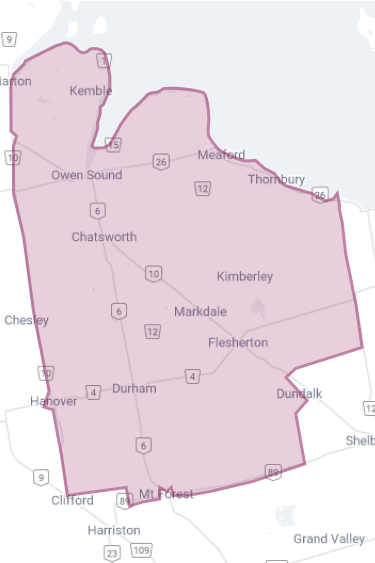Weed Control
Grey County's weed management program provides safe sightlines along County Roads and controls noxious and invasive plan species on our roadsides.
Contact the Weed Inspector
To report areas with noxious or invasive weeds, or to ask a question, please complete our online request form and select the Roads category and noxious weeds.
In general terms the definition of noxious is: Harmful to living things; injurious to health. In Ontario, 25 weeds are considered noxious under the Weed Control Act. A list of these 25 noxious weeds can be found on the Weed Control Act home page; Noxious Weeds in Ontario.
Grey County and local Municipalities have developed a proactive approach for the management and control of noxious weeds. It follows the Integrated Pest Management decision making process to manage pests from reaching damaging levels and for determining what actions to take when pest problems occur. For the last several years Grey County and local Municipalities have been identifying, mapping and updating Wild Chervil locations across the region, assisted authorities with field research and continued to control their right-of-way by mowing infested areas.
Owners and occupiers of land, municipal, rural and urban, are reminded that it is their responsibility to control all declared noxious weeds under the Noxious Weeds Act. Failure to do so leaves owners and occupiers liable for considerable fines. The aim of weed control is to deplete weed seed reserves and prevent further replenishment of the seed store by preventing growth of the weed.
Wild Chervil is an aggressive invasive weed that will smother out other vegetation and dramatically affect crop yields. It is a Biennial plant that will start to grow and flower in May and by early June can already be producing seed.
If Wild Chervil gets established it dramatically reduces crop yields, which has a significant impact on our local economy. The only way to limit or slow the spread of the weed is to prevent it from going to seed. Now is the time to cut it, preferably before it flowers.
Control and Disposal of Wild Chervil
Since Wild Chervil relies on seed to reproduce, weekly mowing is necessary to keep the plant from flowering. These plants are not toxic to touch and it is recommended to pull or dig out the tap roots if possible. If the plants have matured and are coming out in flower the plant is ready to go to seed, cut them as low to the ground as possible and place them in a clear plastic garbage bag so that the seeds won’t spread and leave it in the sun. Once the plants have dried up and died they can be incinerated.
Giant Hogweed is a toxic noxious weed that can cause serious health hazards. Its clear watery sap can cause severe dermatitis and burning of the skin and has known to blind a person if there is contact with the eyes. These plants have been known to grow over 6 feet tall and have a large flower heads that produce thousands of seeds.

Giant Hogweed produces a clear watery sap from the leaves and especially from the stem. If the sap comes into contact with your skin it may cause severe blistering, burns and sometimes inflamed lesions. Removal of the weed should only be performed by those who have been trained in proper removal and disposal procedures.
Giant Hogweed produces a clear watery sap from the leaves and especially from the stem. If the sap comes into contact with your skin it may cause severe blistering, burns and sometimes inflamed lesions. Removal of the weed should only be performed by those who have been trained in proper removal and disposal procedures.
Wild Chervil Frequently Asked Questions
Wild Chervil is an invasive plant species in Grey County and other areas of Ontario.

Wild Chervil is a European biennial plant that looks similar to many native species in Ontario, such as Wild Carrot (Queen Anne’s Lace). This invasive weed is commonly found along roadsides but is spreading into private property including farmland.
Wild Chervil poses a risk to native plants and crops – particularly hay and forage crops. Wild Chervil can grow in dense clusters which out compete and can smother out other plant life. When Wild Chervil makes its way into a hayfield it can also have an impact on the quality of the crop.
No, Wild Chervil is not considered toxic. When handling the plant it is best to wear gloves as a precaution but the plant and its sap is generally not harmful.
Grey County and local municipalities have made significant progress in removing Wild Chervil from roadsides, ditches and municipal property. Wild Chervil is being managed through a combination of targeted spraying, mowing and removal. Grey County is also increasing public awareness of Wild Chervil to encourage residents to dispose of the invasive plant on private property.
All property owners have a responsibility to remove invasive species from their property. If you have Wild Chervil, there are three ways to remove it.
- Mowing – Cut the plant in the early spring before it goes to flower and seed
- Digging out – If the plant has gone to flower, it is best to dig it out. Be sure to remove the entire tap root. Once removed, place the plan in a garbage bag to dry out for a few days and prevent germination before disposing of the plant.
- Herbicide sprays – For dense clusters of Wild Chervil, herbicides are often the most effective treatment. There are limited effective herbicides on the market. All of these sprays require a license to apply. If you have a large patch of Wild Chervil to remove, please contact a licensed agricultural sprayer or lawncare provider.
Wild Chervil goes to flower in May, well before other similar looking plants like Wild Carrot. The plant usually grows to around 4 feet tall but up to 6 feet. White flowers form the heads of the plant. The stems are hollow with fern-like leaves.
More information about Wild Chervil can be found on the government of Ontario website at www.ontario.ca/page/wild-chervil.



